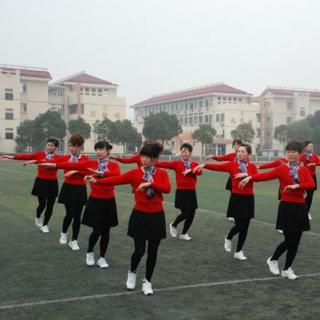
介绍:
Xiaohua: The phenomenon of Chinese square-dancing, which is known for generating widespread public complaints about loud music, will be regulated or so-to-speak standardized I guess and choreographed by China&`&s sports and culture authorities. 国家体育总局、文化部举行2015年全国广场健身操舞活动发布会,宣布将在全国推出12套广场健身操舞,并进行推广和培训。《小苹果》《最炫民族风》等广场舞曲,今后将不再是一个社区一个跳法,而是会有全国统一、编排科学的全新动作。So what do you think of this?
Heyang: I don’t think the government should get too involved with the everyday lives of people, especially when older women dance in groups and some square, I mean it’s suppose to be sort of how creativity is expressed from the grass-root level. What’s the point of standardizing it and making everybody dance in the same way and there’s like 12 choreographed practices that’s gonna be promoted this population? I mean you can save that time and effort and do something better I think.
John: Yeah, I have to say that, all around, this announcement is a pretty big PR failure. I just want to say that to begin with. Number one, I think there is a lot of mis-communication about what actually going on. They are not regulating anything. All they’re really doing is coming up with 12 different dancing patterns that they are going to try to train some of these square-dancers in, right? There’s no regulation. There’s nothing to say that people actually have to do this. And then the second failure is kind of as Heyang was saying like why is this necessary. And I have to agree. I don’t think it’s necessary at all. The complaints aren’t necessarily about ever in fact about the type of music. It’s about well they use very crappy speakers and they play really really, loud. And they play very loud with crappy speakers late at night. They bug people and not just in squares. It’s inside the residential communities where is not very much spaces to walk around in the first place. So I honestly do wonder what was the thought process behind it. Because it doesn’t seem to attempt to solve any of the actual problems posed by square dancing.
Heyang: Yeah, I think that really hits the nail on this issue. I think for the government what it’s saying is trying to improve you know the wellbeings of those living around the square and those who are dancing in the square, but just standardizing the content of the dance doesn’t do anything to that. But I just think there’s one part I don’t really agree with you John. I think when the government says that when more than 600 instructors are actually gonna be dispatched to all these places to teach some of the Damas to dance so they can teach the other older ladies, then I mean why would someone use public funds to do something like this and is it gonna be popular? Probably not. And I just don’t really see the point of it and I think it’s a misuse of funds.
Xiaohua: Yeah, exactly it’s a misuse of funds, a waste of money.
John: Well, I don’t know, I mean I think there can be an argument made that it is in the national interests therefore it is a good use of tax-payers’ money to ensure that people are properly educated on good forms of exercise. I think there is an argument to be made there. Whether or not these 12 methods of dancing will further educate these middle-aged women on good exercise I think is questionable. I think there is that. But to say that just bottom-line it’ss not good use of funds- I think we should careful saying that.
Xiaohua: Ok, Vivian says I like those grannies to get creative on their dancing and I’m afraid unified dancing could intensify their already existing competition.
John: Oh, look, let me just say one thing about this unification and you know the death of creativity in square dancing. It’s not gonna happen. I mean like 600 trainers for the entire country. You need 600 trainers at least just for Beijing, and so this idea that somehow that you can go out to the entire country and educate the masses on how to dance properly. It’s just not gonna happen, I’m sorry.
Heyang: But still, it’s money better saved if they didn’t have to dispatch these 600 people and pay them.
大家还在听

